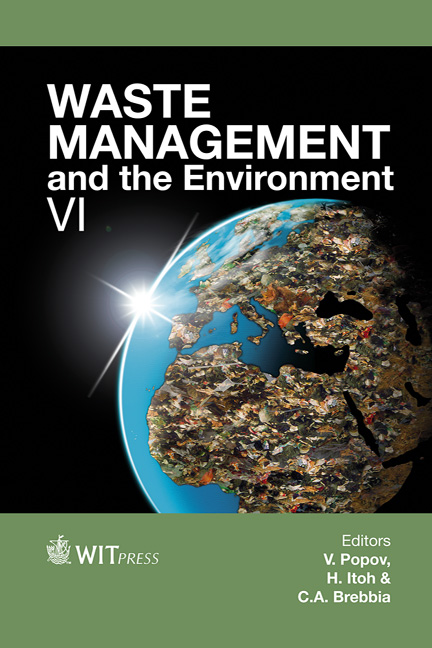Lead Acid Battery Recycling In Costa Rica: A Case Study
Price
Free (open access)
Transaction
Volume
163
Pages
8
Page Range
251 - 258
Published
2012
Size
317 kb
Paper DOI
10.2495/WM120231
Copyright
WIT Press
Author(s)
G. Esquivel-Hernández, P. Bolaños-Ulloa, M. Navarro-Monge, R. Alfaro-Solís, J. P. Sibaja-Brenes, J. C. Mora-Barrantes & J. Valdés-González
Abstract
This work describes the production of secondary lead in a smelter located in Costa Rica. The only input of the plant is scrap automotive batteries. We describe the environmental management strategies used for waste minimization, including the waste characterization and minimization of gaseous emissions. The waste characterization included the sulphidic slag containing varying quantities of lead (total lead content and TCLP), along with the gaseous analysis (SO2, TSP and P-Pb). Through process improvement, we reduced both the quantity of slag produced and the lead loss to the slag, as well as the concentrations of gas pollutants in the gaseous emissions. Keywords: secondary lead, waste management, slag, gaseous emissions. 1 Introduction Several decades ago it was recognized that all the metallurgical industries not only had to take care of the process of manufacture but also safe disposal of the pollutants generated in the form of solids, liquids or gaseous wastes [1]. Metallurgical industries produce important quantities of solid wastes such as slag, ash, sludge, dross and others, whereas the heavy and toxic metals, mainly arsenic, cadmium, chromium, nickel, lead, copper, mercury and zinc, are
Keywords
secondary lead, waste management, slag, gaseous emissions.





